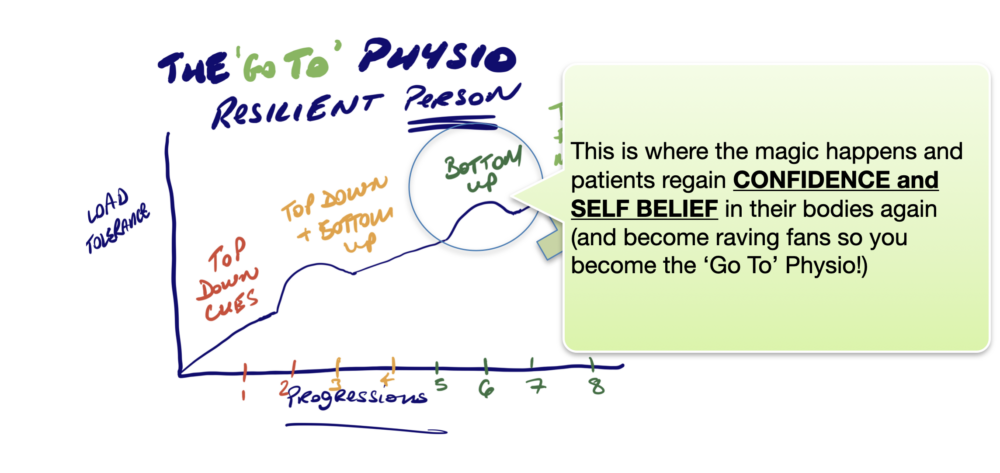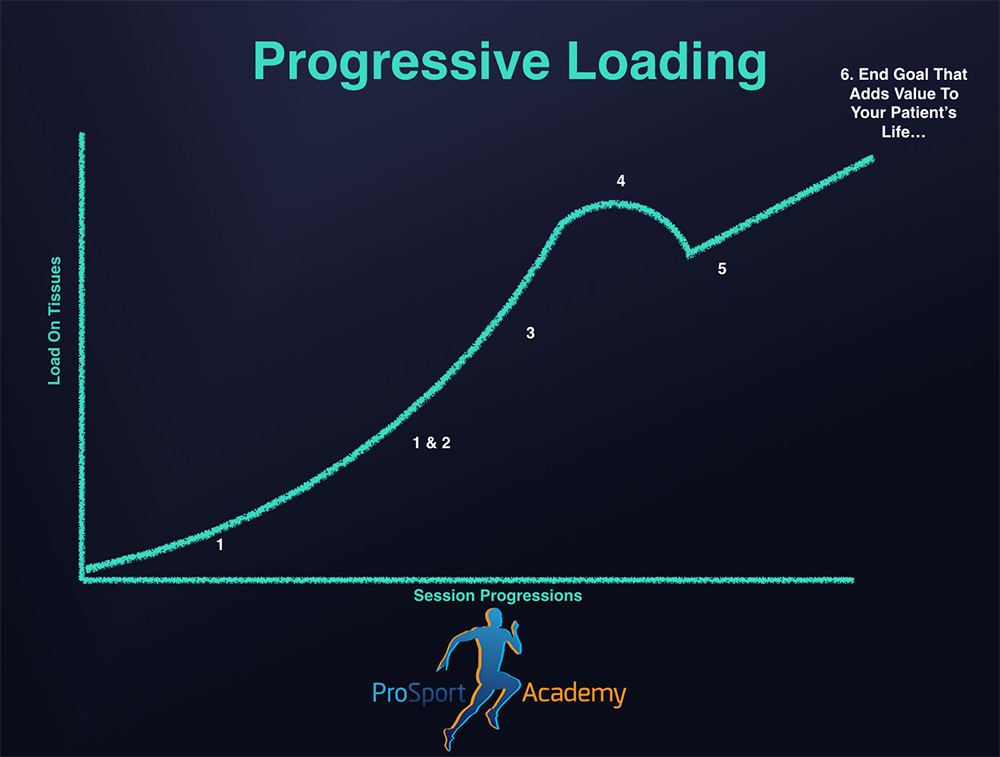Highest Level Rehab And How To Know EXACTLY WHEN The Patient Is Ready To Return To Running Or Other High Load Activities

In my experience, of all the pillars so far, this one is the most commonly omitted feature in the majority of rehab programmes.
To have complete confidence that the patient is ready to return to running or other high loading and high-speed activities, the ‘Go-To’ Therapist needs to be able to justify this logically and without emotion playing a part.
I see so many therapists making these decisions emotionally and wanting to ‘please’ the patient or almost getting clues from the patient rather than remaining the authority and guiding the patient.
In order to justify this logically, the ‘Go-To’ Therapist needs to make sure that there is no doubt the patient can tolerate even higher levels of ground reaction forces through the direction that was identified as having a ‘perceived threat’ present in the initial assessment and/or other directions that they picked up during the higher levels of loading.
You can see by the progressive loading plan below that session 4’s exposure to load for our groin pain patient will actually be greater than what the patient will actually be tolerating in session 5 when they go back for their first running session.
Therefore, in theory, if they can come through session 4 without any reaction from the nervous system in the form of pain, swelling, range of motion restrictions, or whatever other KPIs you are using, you can be pretty confident the patient will be able to tolerate the loading in the next session.

We do this by going through a specific step-by-step set of hopping progressions I’ve used successfully over the last 10 years working in professional sport.
As you can see below from the Scarfe et al (2011) paper, the ground reaction forces for a hop are actually greater than jogging, which logically makes sense.
When we use our knowledge about different reactions that happen to the body to bias certain directions with even more load, we can then further expose certain ‘directions’ with more load than others, like we have done in the previous 3-4 sessions with the patient.
Therefore, logically then, if there are no reactions from the hopping progressions and the groin pain patient is able to do these movements with ‘thoughtless, fearless movement’ in the specific planes and directions that they previously struggled with, then the next progression would be to start running.

Now, before we go ahead with the running progressions, there are some limitations to relying on hopping as a ‘fail safe’ way to put load on the tissues as you can see above in the image.
There is quite a gap in the rate of force development between hopping and sprinting, which would be our final session in the graded exposure programme. To combat this problem, the hopping progressions need to take this into consideration with the progressions used. Therefore I have had to come up with some custom variations of traditional hopping to increase both the rate of force development and the ground reaction forces, to be certain the patient can tolerate these loads before allowing them to sprint in the final running progressions.
Working this way allows me to have complete clarity and confidence that I have logically justified the progressions and the patient is indeed ready to return running.
So, for example, with our groin pain patient, the first level of hopping progression would be leaping from one leg and landing on the other.
As you can see in the image below, we asked the athlete to finish the movement with a reach across their body just as they land.
To self-organise and stabilise their centre of gravity between the base of support, the pelvis will again need to travel laterally, and the lateral hip tissues will be forced to decelerate the bodyweight.

Start


Finish
If we go through the next higher level hopping progressions and there are no adverse reactions from the nervous system (such as reduced motor outputs upon retesting, reduced range of motion, swelling, or whatever markers you are using), then I am very confident this groin pain patient is ready to start running.
When the patient is back running in the next step, the whole limb will be contributing without having to bias a particular direction like we have been doing, so in actual fact there will be even less load on the tissues that had the original ‘threat response’.
This is what gives me complete confidence because we know the patient can tolerate even higher forces than the ground reaction forces they will need to endure when running.
The hopping progressions can all be progressed in the same session if the patient is ready to do so – it is completely down to the person in front of you. I would then leave them with the highest loading progressions with the highest rate of force development for a week, or a day or so, if in a pro sport setting, and reassess for any negative reactions. If all is good, then we progress the patient to 11.
It is worth mentioning again, that at this point in the treatment plan, I quickly screen all planes and directions of loading for any ‘energy inefficiencies’ that did not show up until this level and speed of loading.
It is not uncommon to see a big discrepancy in force absorption or force production at these high levels that were not picked up on with the previous levels of load.
If there are ‘energy inefficiencies’ present, especially in the highest hopping progressions for an elite athlete, then this may not set us back in terms of prognosis for return to play but rather offer insight into what the athlete needs to be focusing on when they return to team training. Also, this work may actually be integrated into their strength and conditioning programme to ensure they build resilience which we will talk about in more detail in pillar 8.
The final point to mention for this particular pillar is that you may not have to take all your patients through the high level hopping progressions that we have mentioned. If you have a patient that wants to just get back to lifting their kids or grandkids, then this step’s level of loading may in fact be external weight such as kettlebells or barbells etc where we have some control of the quantity of loading.
However, I would take the majority of my lower limb patients certainly through the leaping progressions as a minimum as the majority of people need to be able to run for a bus some day or run after their kids so I like them to be able to tolerate this level of loading before moving onto the more resilience based focus of the graded exposure programme.
With that said, when you’re comfortable, move on to the final stage and pillar 8 of the Go-To Therapist approach.

